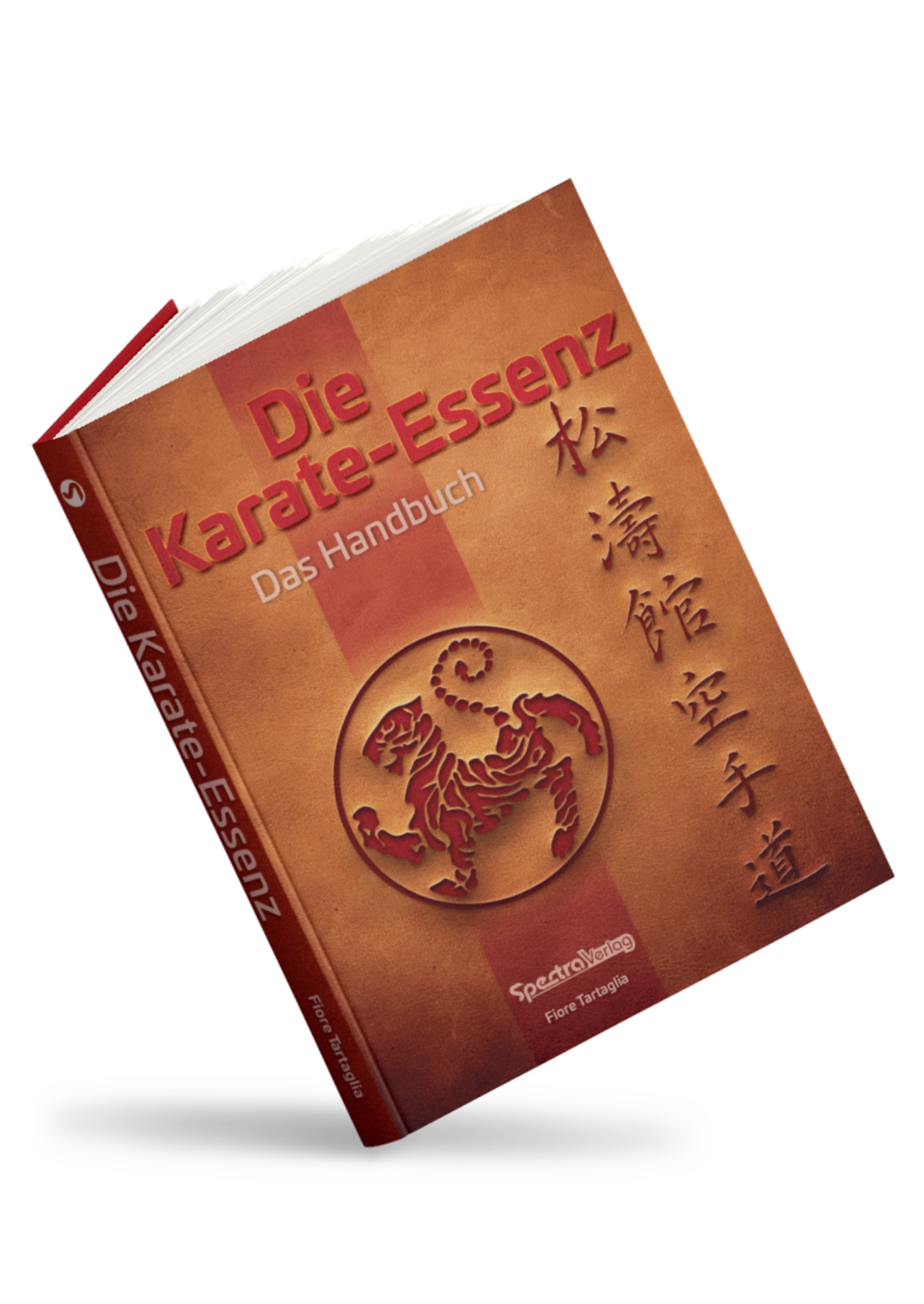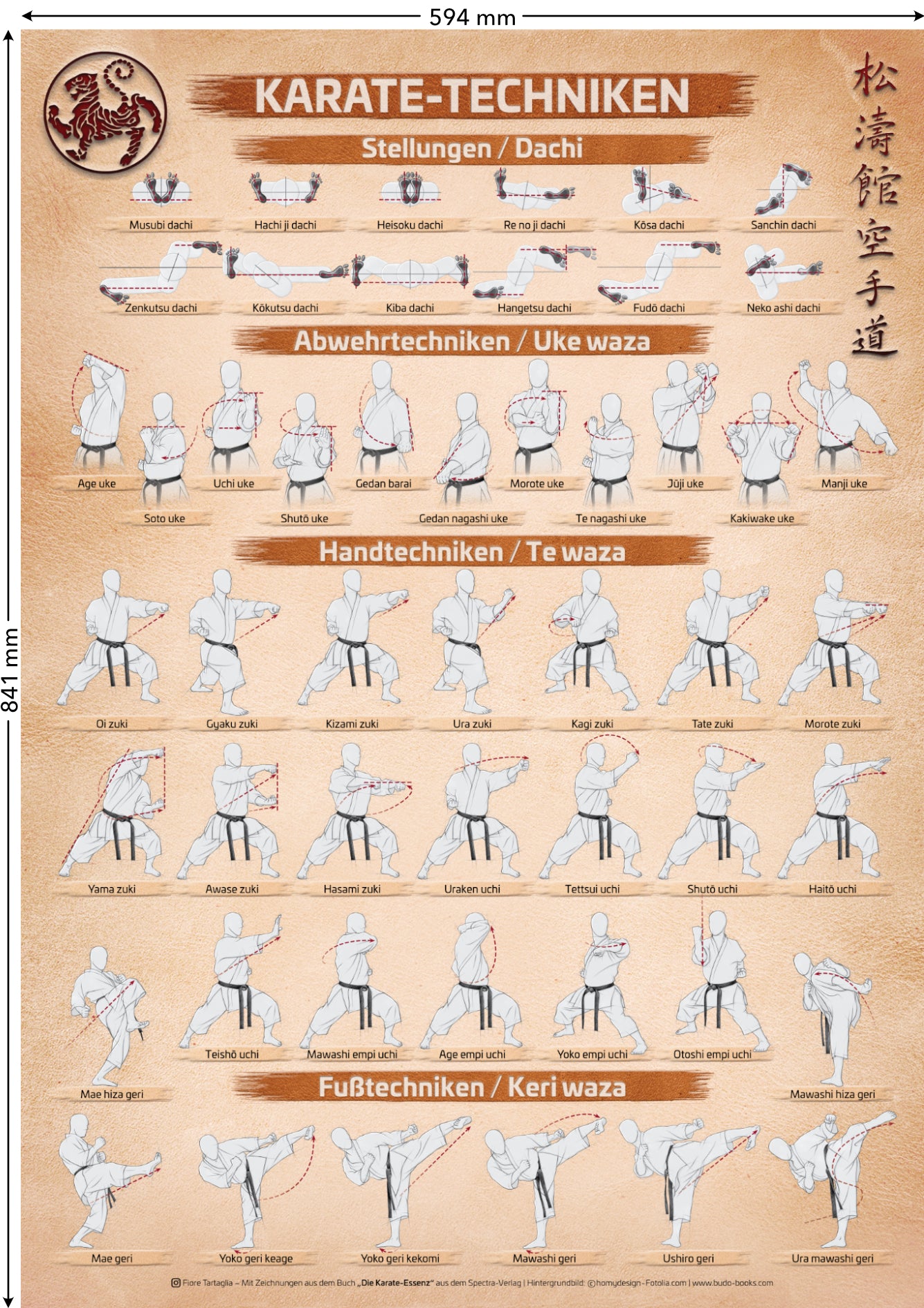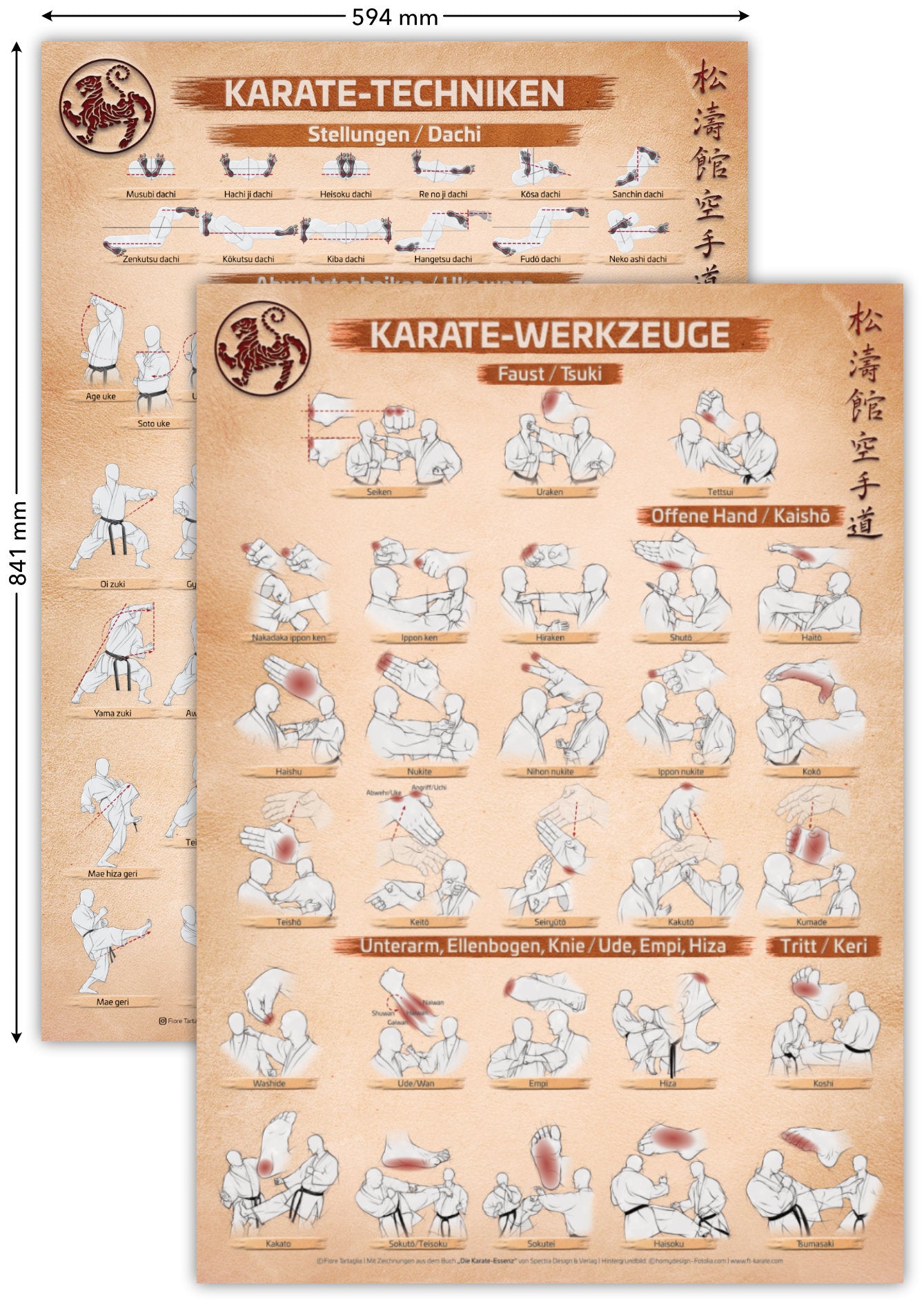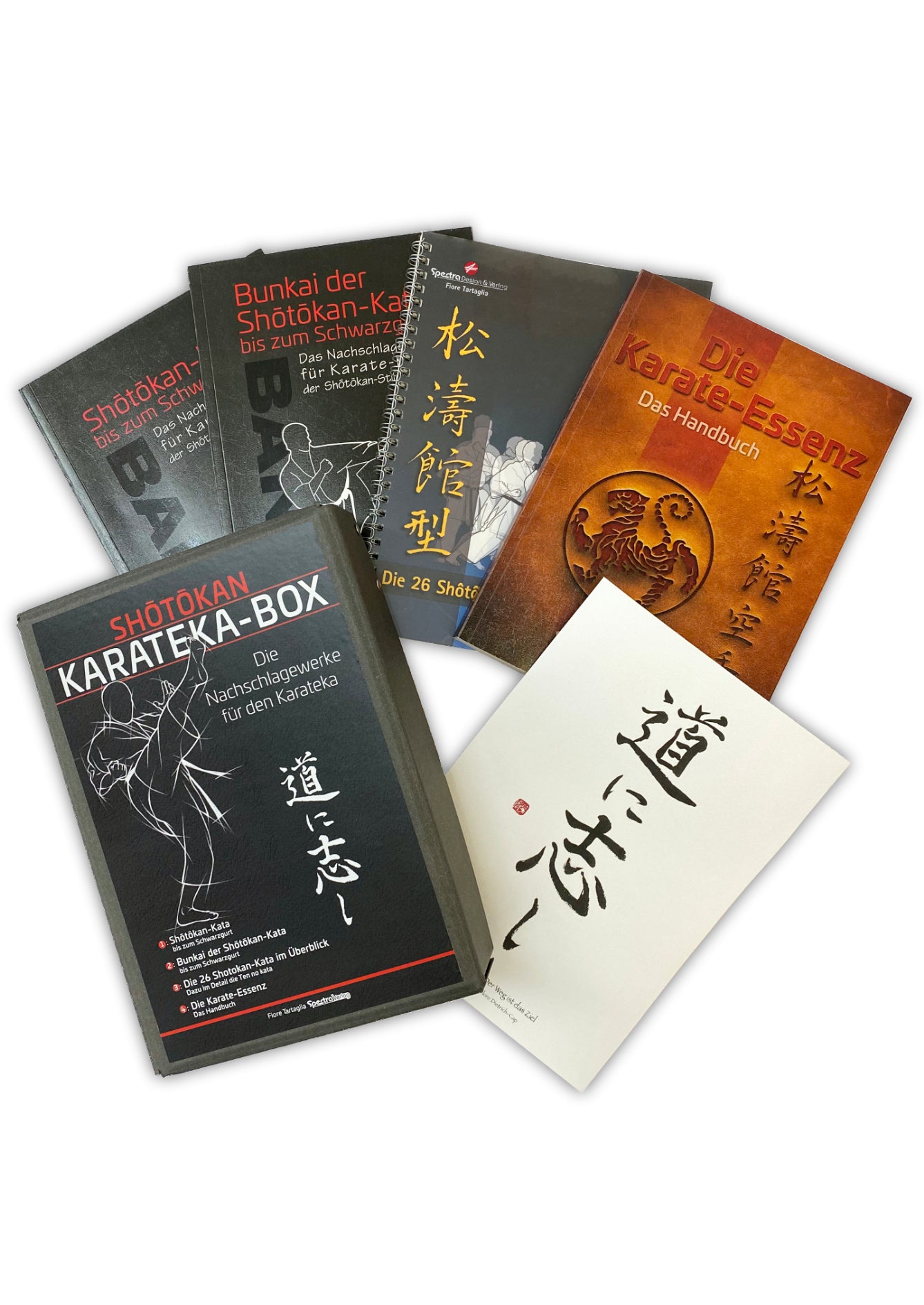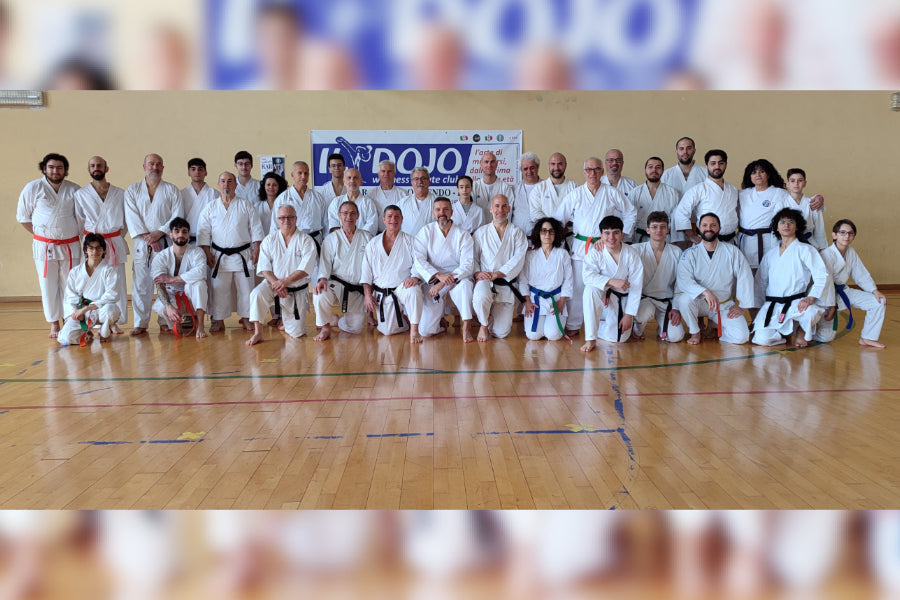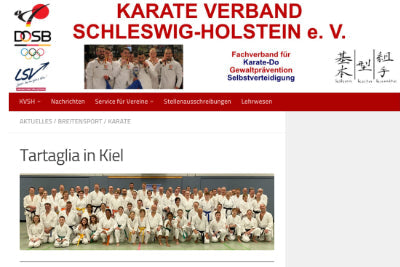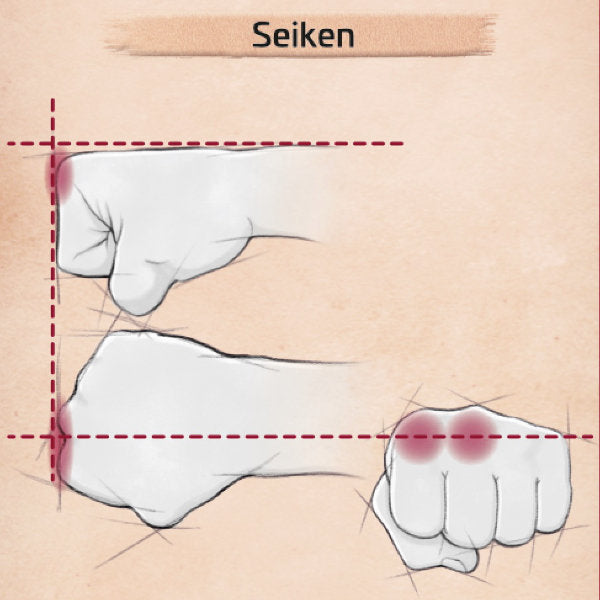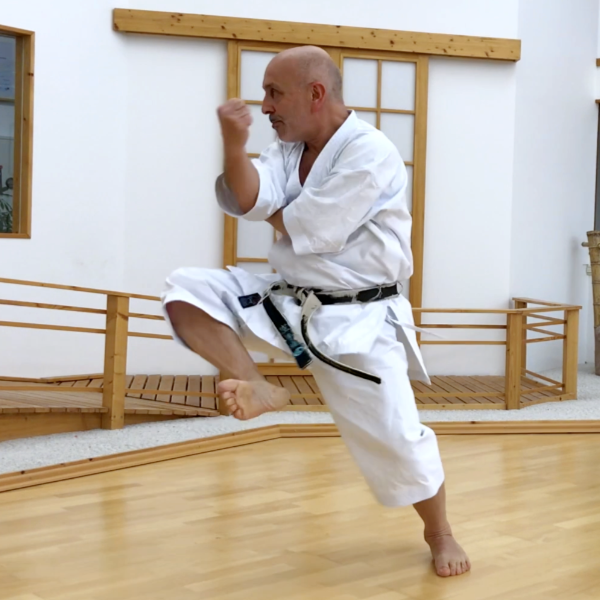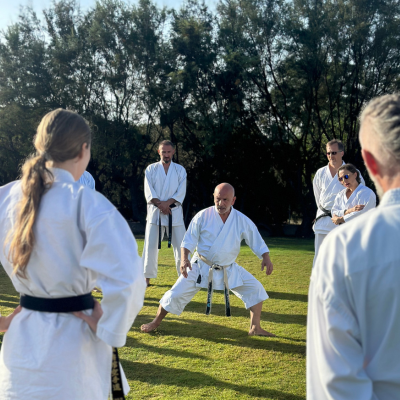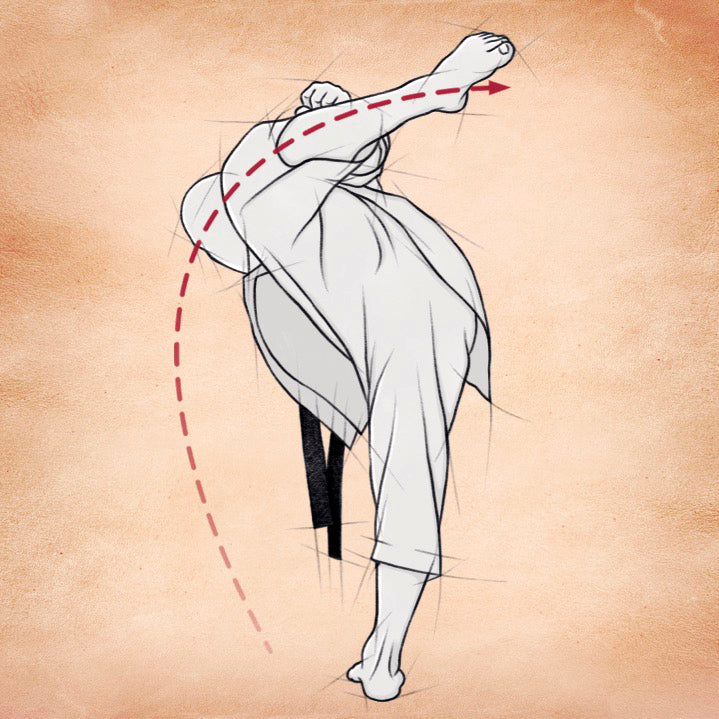In the cross-legged stance, both legs are bent. The shin of the back leg touches the calf of the front leg, creating a compact stance and ensuring stability. Kōsa dachi carries 90% of the body weight on the front leg.
The front foot is pointed forward, with the sole of the foot resting completely on the ground. The back foot points approximately in the middle of the front foot and rests only on the ball of the foot. The angle of the feet to each other is approximately 90°, although this can vary slightly depending on the situation and hip movement.
The feet should be shoulder-width apart or slightly narrower. In practice, the kōsa dachi is often performed with both feet very close together. However, it is advisable to position them wider to ensure better stability thanks to the larger stance.

